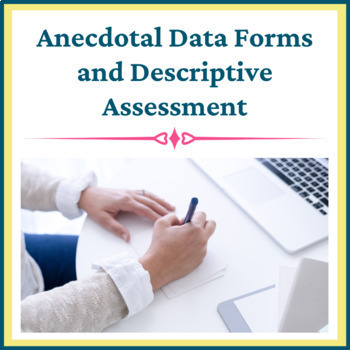Progress Monitoring for IEP Goals
- Zip
- Excel Spreadsheets
Products in this Bundle (2)
Bonus
Description
*Progress Monitoring for IEP Goals (Bundle)is a bundle of IEP Goal Tracking Forms (for academic progress monitoring) and Behavior Data Collection Sheets.
Why you need Behavior Data Collection Sheets
Behavior Data Collection Sheets make collecting data on student growth and IEP behavior goals quick and painless! There are multiple forms to meet your specific data collection needs. The clickable first page links easily to each data collection form, making it easy to find what you need.
Anecdotal Behavior Data Collection Sheets and Descriptive Assessment
While some people think of anecdotal behavior documentation as more subjective than quantitative data collection, this is not necessarily the case. In fact, it is important to try to keep your anecdotal observations objective. These forms help you to document your notes on behavior incidents while leaving emotion out of it.
It is important that anecdotal behavior records document the topography of behavior, or what can be seen. In other words, rather than "John is angry," you would want to explain what John is doing that makes you think he is angry (yelling, throwing items, crumpling up work, etc.). These forms help walk you through this process.
- ABC Recording Forms (3 versions)
- Observation Protocol
- Anecdotal Observation Notes
- Anecdotal Observation Questions
- General Education Teacher Questionnaire
- Positive Reinforcement vs. Correction Recording Form
Quantitative Behavior Data Collection Sheets
When documenting student problem behavior, it is also important to collect quantitative data. Quantitative data simply means data that can be counted. If we collect quantitative information as we attempt behavioral interventions, this data will help us to determine whether the interventions are having an impact on behavior or not.
- Duration Recording Forms (4 versions)
- Frequency/Event Recording Forms (3 versions)
- Partial Interval Recording Forms (2 versions)
- Whole Interval Recording Forms (2 versions)
- Time-on-Task Recording Forms (2 versions)
- Scatterplot (5 versions)
Forms for Managing Your Caseload
- Behavior Support Caseload
- Behavior Support Weekly To-Do
- IEP at a Glance
- IEP/BIP Training Form (2 versions)
- Project Planner
- Student Contact Information
- Student Contact Log
- Student Notes
- Meeting Notes
- Notes- General
IEP Goal Tracking Forms: Academic Forms
You need IEP Goal Tracking Forms if you are wondering how to measure student academic growth and you are ready to simplify classroom data collection. These academic data collection forms make collecting data on student growth and academic IEP goals quick and painless.
Choose the right form for your specific data collection needs. These forms are very helpful for both special education and general education teachers to track student growth and academic IEP goals.
Your purchase of IEP Goal Tracking Forms includes:
- Data Collection By Subject
- Math Fluency Data Collection Form
- Math Goal Data Collection Form
- Reading Fluency Data Collection Form
- Reading Goal Data Collection Form
- Written Language Data Collection Form (3 versions)
- Data Collection Forms – Any Subject (3 versions)
Data Collection Averages by Quarter or Trimester
These forms are perfect for providing quantitative information for parent conferences, IEP meetings, or progress reports.
- Assignment Completion – Quarter Average
- Assignment Completion – Trimester Average
- Weekly Assessment – Quarter Average
- Weekly Assessment – Trimester Average
Data Tracking for Standardized Tests
- Standardized Test Score Tracking- Individual Student
- Standardized Test Score Tracking- Class/Caseload
Forms for Keeping Track of IEP Goals and Training
- IEP at a Glance
- IEP/BIP Training Forms (2 versions)
PLUS
- Meeting Notes
- Notes- General
**If you are interested in tracking behavior data and easily creating professional-looking graphs, you might want to check out:
Daily Behavior Sheet for IEP Goals (Behavior IEP Goals)
- Daily and Weekly Behavior Percentage Graphs through the 2025-2026 school year
- Editable point sheet
- Point sheet with five operationally-defined behaviors
Duration Data for Problem Behavior (Duration ABA)
- 4 different Duration Recording Forms
- Weekly Behavior Duration Graph through the 2025-2026 school year
Frequency Data for Problem Behavior (Frequency Tables Excel)
- 2 different Frequency Recording Forms
- Daily and Weekly Behavior Frequency Graphs through the 2025-2026 school year
Interval Data for Problem Behavior (Interval in Excel)
- 6 different Interval Recording Forms
- Daily Behavior Interval Graph through the 2025-2026 school year
Rate Data for Problem Behavior (Rate on Excel)
- 3 different Behavior Rate Recording Forms
- 1 Rate of Positive Interactions to Corrections Form (helpful for self-reflection)
- Weekly Behavior Rate Graph through the 2025-2026 school year
Please follow me on TPT for more great resources! And remember, if you purchase, please leave a review and TPT will give you credits toward more great TPT resources!





